Madhya Pradesh 10th Standard General Science Exam Question Paper 2018 with Solutions – Free Download
MP Board Class 10 General Science 2018 Question Paper comes with Solutions, which are very useful for the students who are preparing for their final exams. Cracking these exams requires hard work and commitment. Practising these MP Board Class 10 Science 2018 Question Paper solutions lays the basis for the students to crack the Science exam. Students can quite easily download the solved or unsolved question paper PDFs by just clicking on the respective links that are listed in this article. The PDF links mentioned below are interactive and allow the students to get the printable formats of the previous year paper. The questions and answers are also available on the page for the students to refer online when they like.
Alternatively, students should also have a thorough knowledge of the complex concepts that are found in the MP Board Class 10 General Science textbook. Solving these solutions is the perfect method for the students to gain an overview of the Madhya Pradesh Class 10 General Science question paper design. Students are advised to solve the previous papers of MP Board Class 10 General Science regularly while preparing for the exams. By practising these question papers and referring to the solutions, the students will be able to easily self-analyse their own performance and their preparation level for the final exams. If the students solve these paper solutions regularly, then they can get information about the marks’ distribution in each section.
Download Madhya Pradesh Board 2018 General Science Question Paper
Download MP Board 2018 General Science Solutions
MP Board Class 10 General Science 2018 Question Paper with Solutions
1. Fill in the blanks: 1 x 5 =5
(i) Chemical equilibrium is only possible in a ________ vessel.
Answer: closed
(ii) Distilled water is a _______ of electricity.
Answer: non-conductor
(iii) Urea is formed in the ______.
Answer: liver
(iv) Metals are ____________ of heat and electricity.
Answer: good conductors
(v) Group of stars are called _______.
Answer: asterism
- Choose the correct alternative. 1 x 5 = 5
(i) General structure for the formula of alcohol is
(a) R-OH
(b) R-CHO
(c) R-CO-R
(d) R-COOH
Answer: (a) R-OH
(ii) The planet, nearest to the sun is
(a) Earth
(b) Saturn
(c) Mars
(d) Mercury
Answer: (d) Mercury
(iii) The name of the metal that is immersed in Kerosene oil is ____
- Iron
- Copper
- Sodium
- Calcium
Answer: (c) Sodium
(iv) SI unit of resistance is ______
- Volt
- Ohm
- Watt
- Ampere
Answer: (b) Ohm
(v) Number of chambers in the human heart is _____
- One
- Two
- Three
- Four
Answer: (d) Four
3. Match Column “A” with Column “B” 1 x 5 = 5
| “A” | “B” |
| (i) Power of lens |
|
| (ii) Quick silver |
|
| (iii) Excretory Organs in the earthworm | (c) Dioptre |
| (iv) Producer | (d) Synthetic Plastic |
| (v) Bakelite | (e) Nephridia |
| (f) Potassium | |
| (g) Human |
Answer:
| “A” | “B” |
| (i) Power of lens | (c) Dioptre |
| (ii) Quick silver | (a) Mercury |
| (iii) Excretory Organs in the earthworm | (e) Nephridia |
| (iv) Producer | (b) Green plant |
| (v) Bakelite | (d) Synthetic Plastic |
4. Write the answer in one sentence each: 1 x 5 = 5
(i) What is the main component of LPG?
Answer: Liquefied petroleum gas, commonly referred to as LPG is a flammable mixture of hydrocarbon gases that are used as fuel in heating appliances and in vehicles. The main component of LPG is the butane.
(ii) Write the name of ‘Red Planet’.
Answer: Mars is the ‘Red Planet.’
(iii) Which disease is found in humans due to deficiency of blood?
Answer: Anaemia is a disease found in humans due to deficiency of blood, resulting from low RBC count.
(iv) What is the unit of sound?
Answer: The most common SI unit of sound that is used is Decibel, which is abbreviated as dB.
(v) Write the name of a bisexual animal.
Answer: Bisexual organisms are also known as Hermaphrodites. Some examples for hermaphrodites are the leech, starfish, the earthworm, tapeworm, cockroach and more.
5. Define electric power. 2
Answer: Electric power is the rate at which work is done or energy is transformed into an electrical circuit. Simply put, it is a measure of how much energy is used in a span of time. Denoted by P and measured using the SI unit of power is the watt or one joule per second. Electric power is commonly supplied by sources such as electric batteries and produced by electric generators. Meanwhile, the formula for electric power is given by P= VI, with V as the potential difference in the circuit and I as the electric current. Power is also written as P = I2R OR P= V2/R, both derived from Ohm’s Law, where V is given as IR.
Or
Define Potential Difference.
Answer: In an electrical circuit, the potential difference between two points (E) is defined as the amount of work done (W) by an external agent in moving a unit charge (Q) from one point to another.
6. Write the laws of refraction.
Answer: Refraction is the bending of a wave when it passes from one medium to another. Check here for more information on Laws of refraction.
Or
Write two uses of convex mirrors.
Answer: Convex mirror is used for security purposes and as a rearview mirror on vehicles. Convex mirrors are often used in the hallways of buildings including stores, schools, hospitals, hotels and apartment buildings. They are also used in some automated teller machines as a handy security feature that allow the user to see what all is happening behind them. Find here the main uses of a convex mirror.
7. What is absolute alcohol?
Answer: Absolute alcohol is the pure ethyl alcohol or ethanol, which consists of not more than 1% water. It is a colourless liquid with almost 99% pure alcohol by weight. The molecular formula for ethanol is C2H 5OH.
Or
Write the name of any two enzymes.
Answer: Oxidoreductases and Ligases are two types of enzymes. The enzyme Oxidoreductase catalyses the oxidation reaction where the electrons tend to travel from one form of a molecule to the other. Example is pyruvate dehydrogenase, catalysing the oxidation of pyruvate to acetyl coenzyme A. Meanwhile, the Ligases enzymes are known to charge the catalysis of a ligation process. For example, DNA ligase catalyses the joining of two fragments of DNA by forming a phosphodiester bond.
Find more details about types of enzymes here.
8. Write any two characteristics of Jovian Planet.
Answer: Planets in the Solar system fall under the Terrestrial planets and the Jovian planets. Jovian planets are said to be an enormous ball of gaseous substances made up of hydrogen and helium. The four Jovian planets are Jupiter, Saturn, Uranus and Neptune. The density of these planets are relatively lesser than that of the Earth as they are created using hydrogen along with helium and compounds of hydrogen such as methane and ammonia. They have strong magnetic fields as a result of their high speed of rotation. Also, as they are further away from the sun, they have low temperatures.
Or
What is Galaxy?
Answer: A galaxy is a sprawling space system which is composed of stars, dust, interstellar gas, stellar remnants and dark matter and all held together by gravity. The word ‘Galaxy’ is termed from the Greek word ‘galaxies‘.
9. Write any three differences between minerals and ores.
Answer: Find the difference between minerals and ores.
Or
Explain froth flotation process of concentration of ore.
Answer: Froth flotation is one of the most popular operational processes for mineral beneficiation.
10. Write composition, its percentages and uses of any three alloys.
Answer: Babbit metal is an alloy made of Tin (Sn) – 90%, Antimony (Sb) – 7%
and Copper (Cu) – 3%. Steel is another alloy. The composition of stainless steel is:
- Approximately 85-88% iron (Fe)
- At least 10.5% chromium (Cr)
- Less than 1.2% carbon (C)
- Small quantities of other elements
Find out the composition and percentages of alloys here. Meanwhile, find here the common uses of Alloy
Or
What happens when: (write chemical equation only) .
(i) Zinc reacts with dilute sulphuric acid
(ii) Sulphuric acid reacts with caustic soda
(iii) Ammonia reacts with hydrogen chloride gas
Answer: (i) Zinc reacts with dilute sulphuric acid to produce hydrogen gas, H₂ and zinc sulphate.
Zn(s) + H2SO4(g) —> ZnSO4(s) + H 2
(ii) When the excess of caustic soda reacts with sulphuric acid, the neutral salt sodium sulphate is formed.
2NaOH + H2SO4 —> Na2SO4 + 2H2O
(iii) Ammonia reacts with hydrogen chloride to form ammonium chloride.
NH3 + HCl —> NH4Cl
11. What is rainwater harvesting? Write two main aims of rain water harvesting (any two).
Answer: A properly designed rainwater harvesting system can supply up to 100% of household water needs. Rainwater harvesting is the practice of capturing and storing rain to provide water for human use. Simple rainwater harvesting systems can be used to supply landscape needs. It helps to reduce stormwater run off by intercepting and sequestering it for later use.
Rainwater harvesting systems most frequently collect water from building roofs and stored in tanks. Rainwater harvesting has been a widely used technology for water supply in Vietnam’s rural areas for centuries. Nowadays, thanks to favourable rainfall conditions in the rainy season, rainwater collection and storage remain a self-help solution to meet the water needs of rural households. Rainwater harvesting is an excellent source of water for landscape irrigation with no chemicals and dissolved salts and free from all minerals. It reduces the need for imported water.
Or
What is pollution? Write any two preventive measures to control air pollution.
Answer: “Pollution is the introduction of substances (or energy) that cause adverse changes in the environment and living entities .” Pollution need not always be caused by chemical substances such as particulates (like smoke and dust). Forms of energy such as sound, heat or light can also cause pollution. These substances that cause pollution are called pollutants. Meanwhile, air pollution is the release of pollutants such as gases, particles, biological molecules, etc. into the air that is harmful to human health and the environment.
Other air pollution control measures include:
- By minimising and reducing the use of fire and fire products.
- Another way of controlling air pollution caused by industries is to modify and maintain existing pieces of equipment so that the emission of pollutants is minimised.
- Sometimes controlling pollutants at the source is not possible. In that case, we can have process control equipment to control the pollution.
12. Write the medicinal uses of the following plants.
(i) Ginger
(ii) Haldi
(iii) Amla
Answer: (i) Ginger helps to reduce nausea and inflammation.
(ii) Curcumin is the active ingredient in Amla. Used as an antiseptic and an antibiotic, Amla helps to relieve a headache and swelling of the eye.
(iii) The active ingredient found in Amla is the vitamin C and so can be used for fever, diabetes, asthma and so on.
Or
Write the importance of medicinal plants in brief.
Answer: Some plants are of medicinal importance. Medicines made from such plants are called medicinal plants. Medicinal plants can be used to synthesise chemical compounds that are used as a defence against insects, fungi, diseases, and herbivorous mammals. Some plants grown for their medicinal values are Tulsi, Neem Brahmi, Belladonna, Eucalyptus and more.
- Alkaloid obtained from the roots of Belladonna are used as pain relievers. They also stimulate respiration and circulation.
- Meanwhile, the leaves of eucalyptus are also used to extract an oil that is used to treat blocked nose and throat infections. It is also used as mosquito repellant.
13. Explain compound microscope with a diagram
Answer:
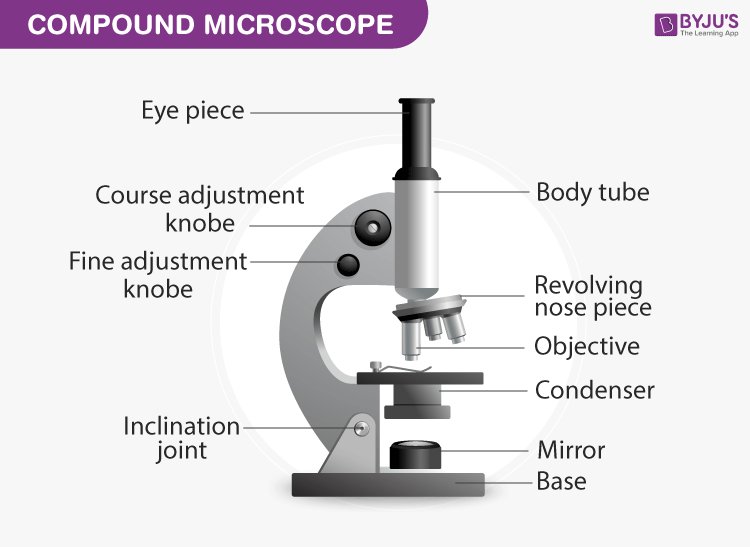
Or
What is hypermetropia? Give its causes: Explain with the help of a ray diagram, how it is corrected.
Answer: People with hyperopia or hypermetropia are said to have far-sightedness or long-sightedness. Cause and treatment for hypermetropia is given here.
14. Draw a well-labelled diagram of a voltaic cell.
Answer:
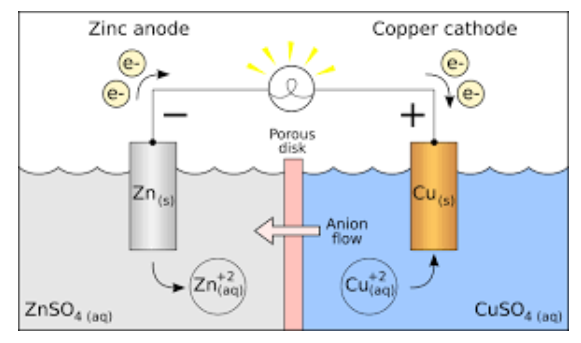
Or
Draw a well labelled diagram of electric motor.
Answer:
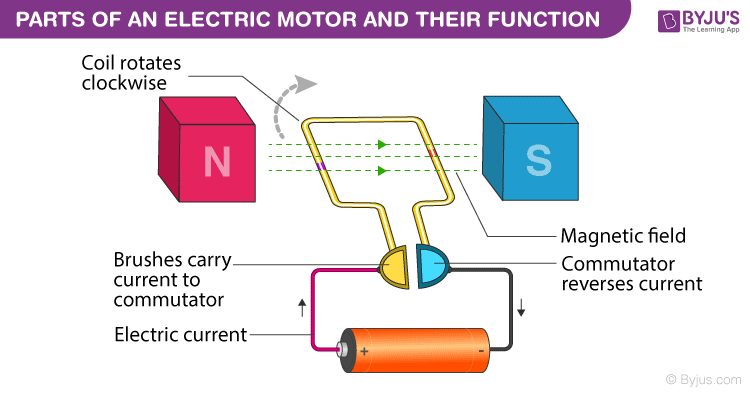
15. Write any four differences between nuclear fusion and nuclear fission.
Answer: Find here the difference between nuclear fusion and nuclear fission.
Or
Explain the working of a Solar water heater in short by drawing a well labelled diagram.
Answer:
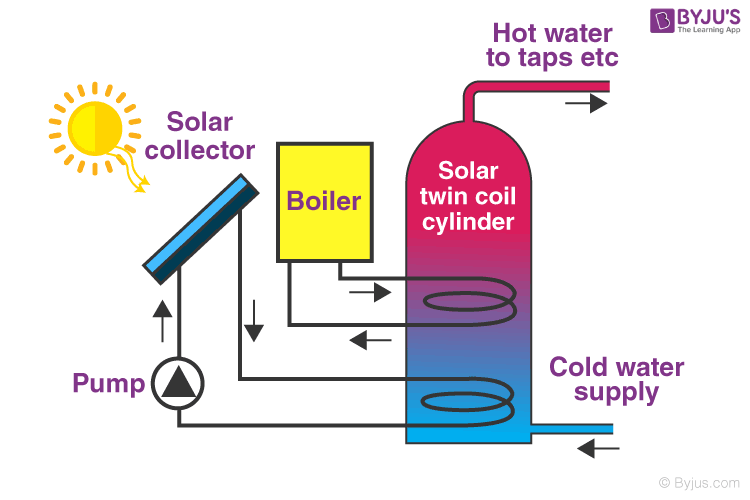
16. Explain the female reproductive organs of a flower by a well-labelled diagram.
Answer:
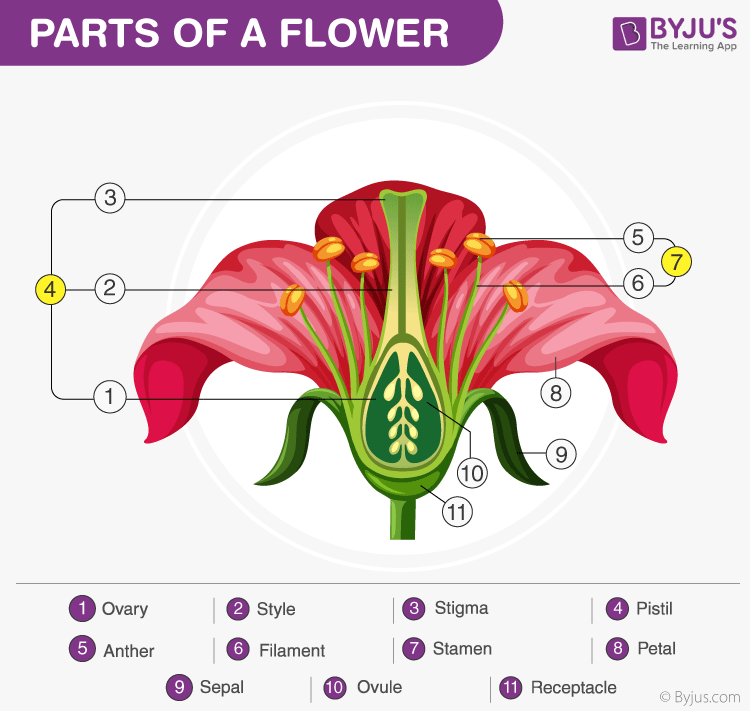
Or
What is genetics? Explain Mendel’s Law of dominance with a line diagram.
Answer: Genetics is defined as the branch of biology that deals with the study of genetic variation, genes, and heredity.
According to the law of dominance, recessive alleles are always masked by dominant alleles. Hence, a cross among a homozygous recessive and a homozygous dominant shows the dominant phenotype by still having a heterozygous genotype. This law could be explained by the monohybrid cross experiment. In case of a cross among the two organisms of contrasting traits, the character that is visible in the F1 generation is known as dominant and the one that is suppressed is known as recessive. Every character is handled by a pair of dissimilar factors and only one among the characters shows the results.
17. Define detergents. Write any three differences between a soap and a detergent.
Answer: Learn from here what is a detergent and the difference between a soap and a detergent.
Or
What is polymerisation? Write name and main uses of any three polymers.
Answer: The polymerisation is defined as the chemical process in which the monomers are joined together to form polymers. Normally, it takes several thousands of monomers to make a single polymer. Meanwhile,there are three types of classification of polymers based on the source of availability, namely, Natural, Synthetic, and Semi-synthetic Polymers. Find also details about the name and main uses of these three polymers.
18. Name the factors that affect the rate of a reaction. Explain in detail.
Answer: Find here details about the factors that affect the rate of a reaction.
Or
What is heat treatment of steel? Explain.
Answer: Steel is an alloy of iron and it needs to be treated so that it can be cut and shaped into the final product. Now, steel is at first heated and then cooled to change their physical and mechanical properties, without any change to its shape. This process is known as heat treatment. This is the method used to strengthen the materials and is also used to modify some mechanical properties like improving formability, machining and so on. Meanwhile, the tough steel alloy goes through three main basic steps of heat treatment such as Annealing Quenching and Tempering.
19. What is photosynthesis? Write any three factors that affect photosynthesis.
Answer: Photosynthesis is a process by which phototrophs convert light energy into chemical energy, which is later used to fuel cellular activities. The chemical energy is stored in the form of sugars, which are created from water and carbon dioxide. There are several factors that affect the rate of photosynthesis. Light intensity, water, soil pH, carbon dioxide concentration, temperature and other climatic conditions are the main factors affecting the rate of photosynthesis.
Check out for more details about photosynthesis.
Or
Write any five differences between Aerobic respiration and Anaerobic respiration.
Answer: Find here the difference between aerobic and anaerobic respiration.
20. Write any five differences between artery and vein.
Answer: Arteries and veins are two different types of blood vessels in the circulatory system. Meanwhile, arteries have more muscular walls and narrower lumen compared to veins. Additionally, veins have valves, which are not present in the arteries. Find out the difference between arteries and veins here.
Or
Describe the process of Urine formation.
Answer: The formation of urine involves four stages, which are
- Glomerular Filtration
- Tubular Reabsorption
- Tubular Secretion
- Concentration of Urine
Check out here to know more about the mechanism of urine formation.
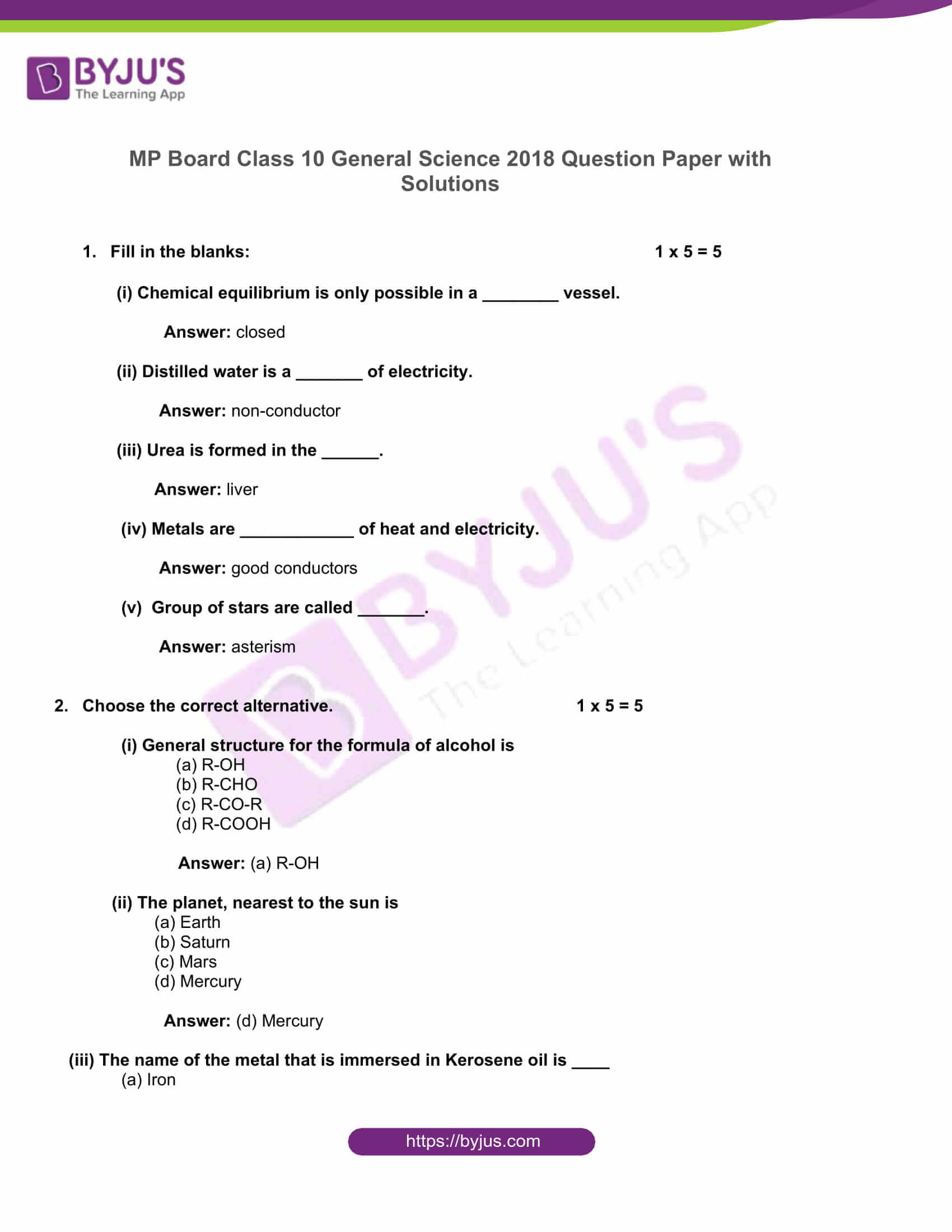
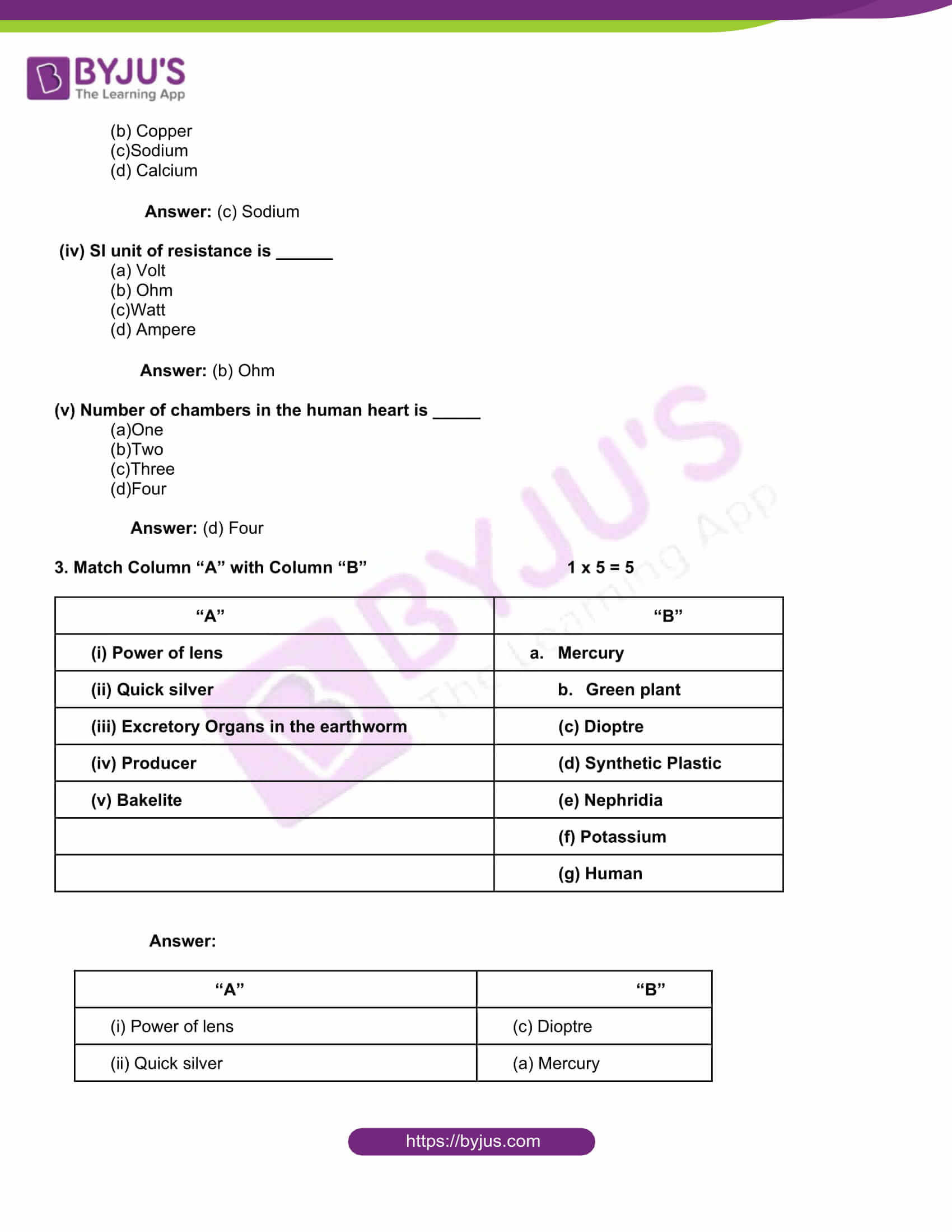
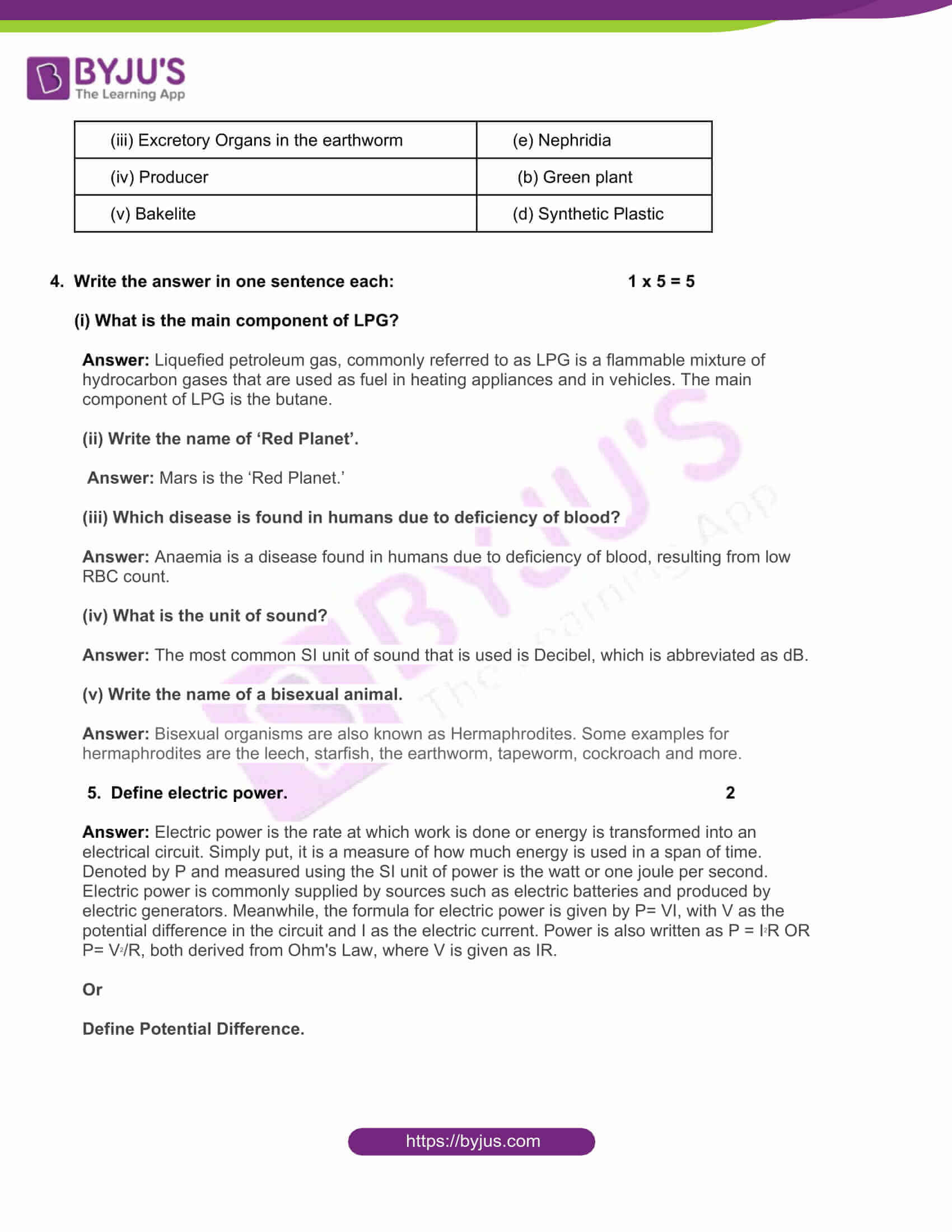
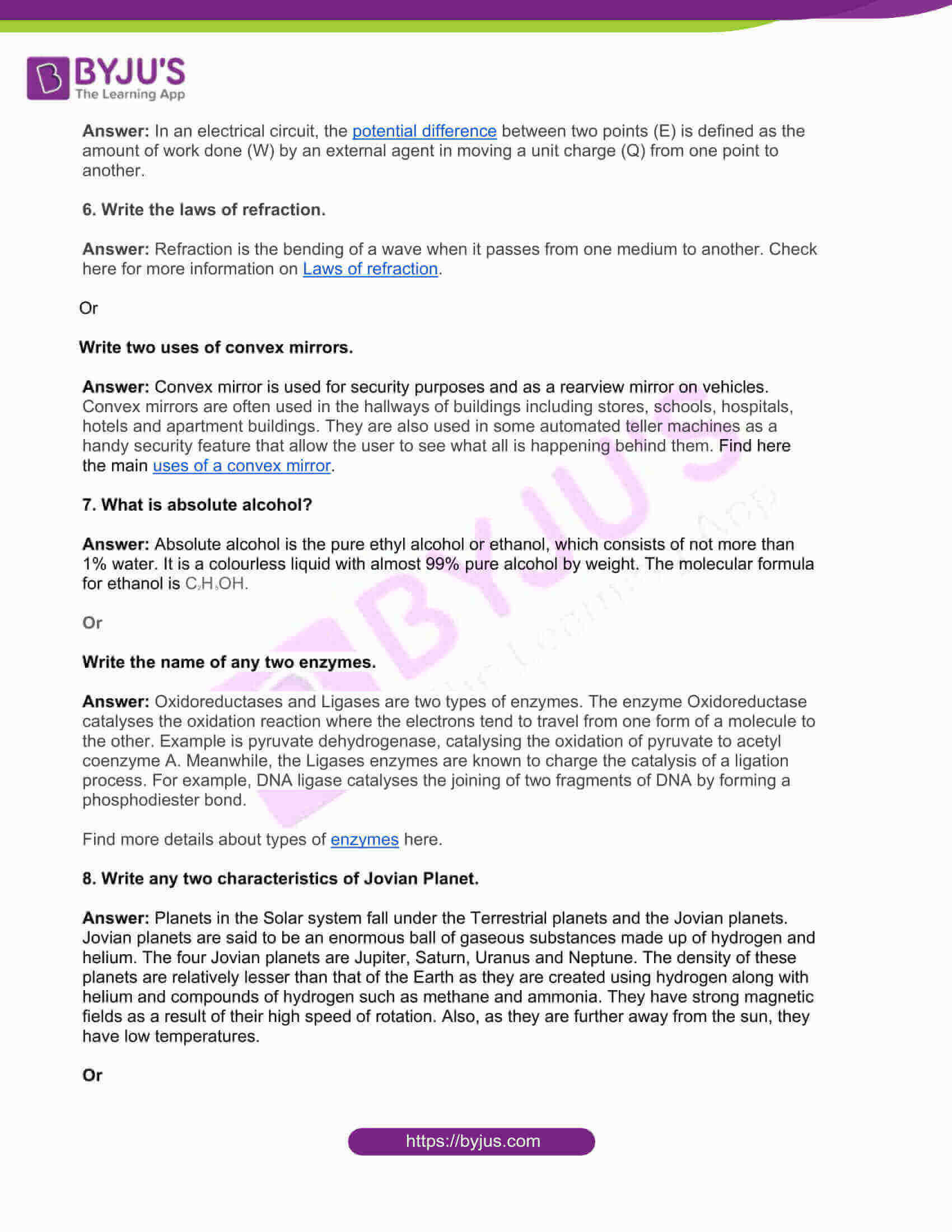
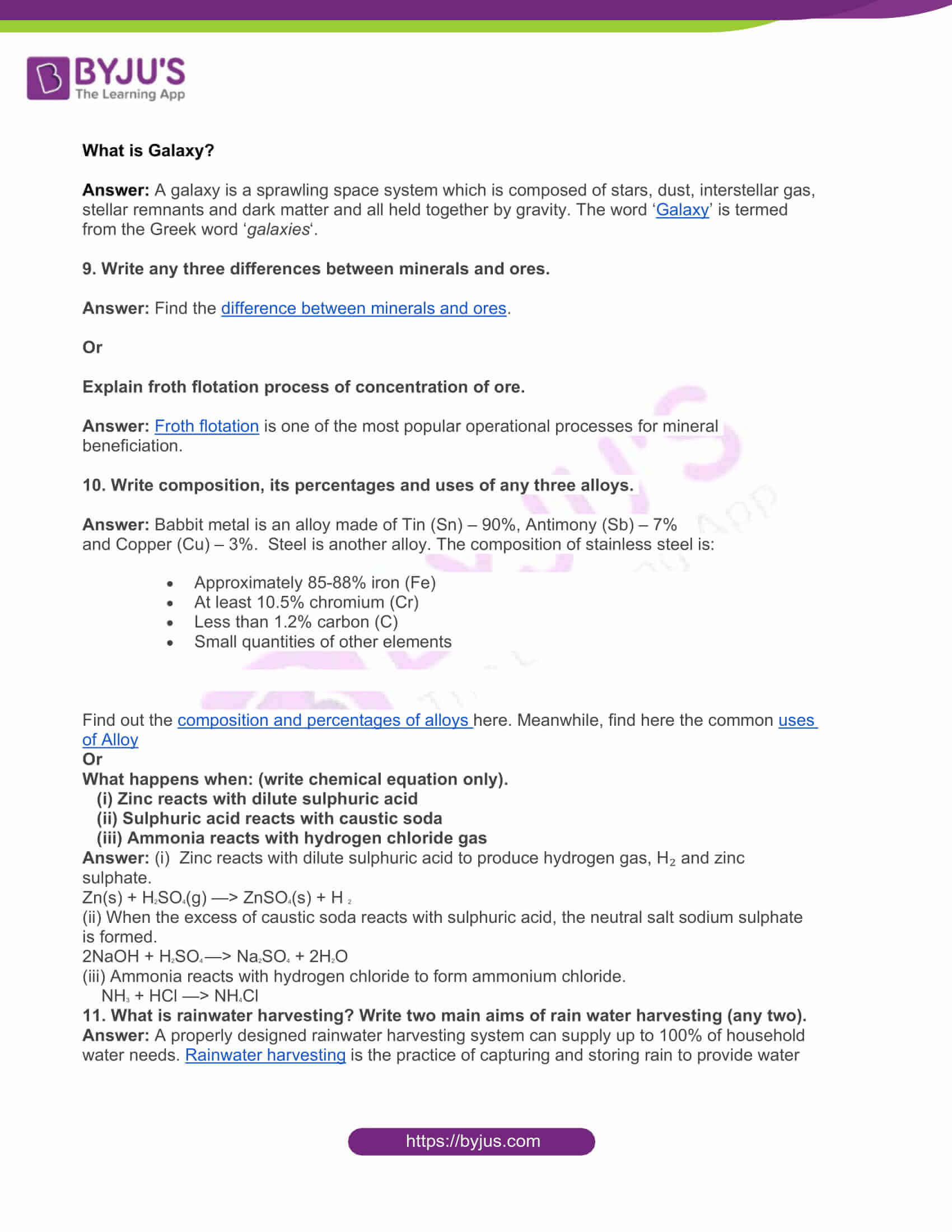
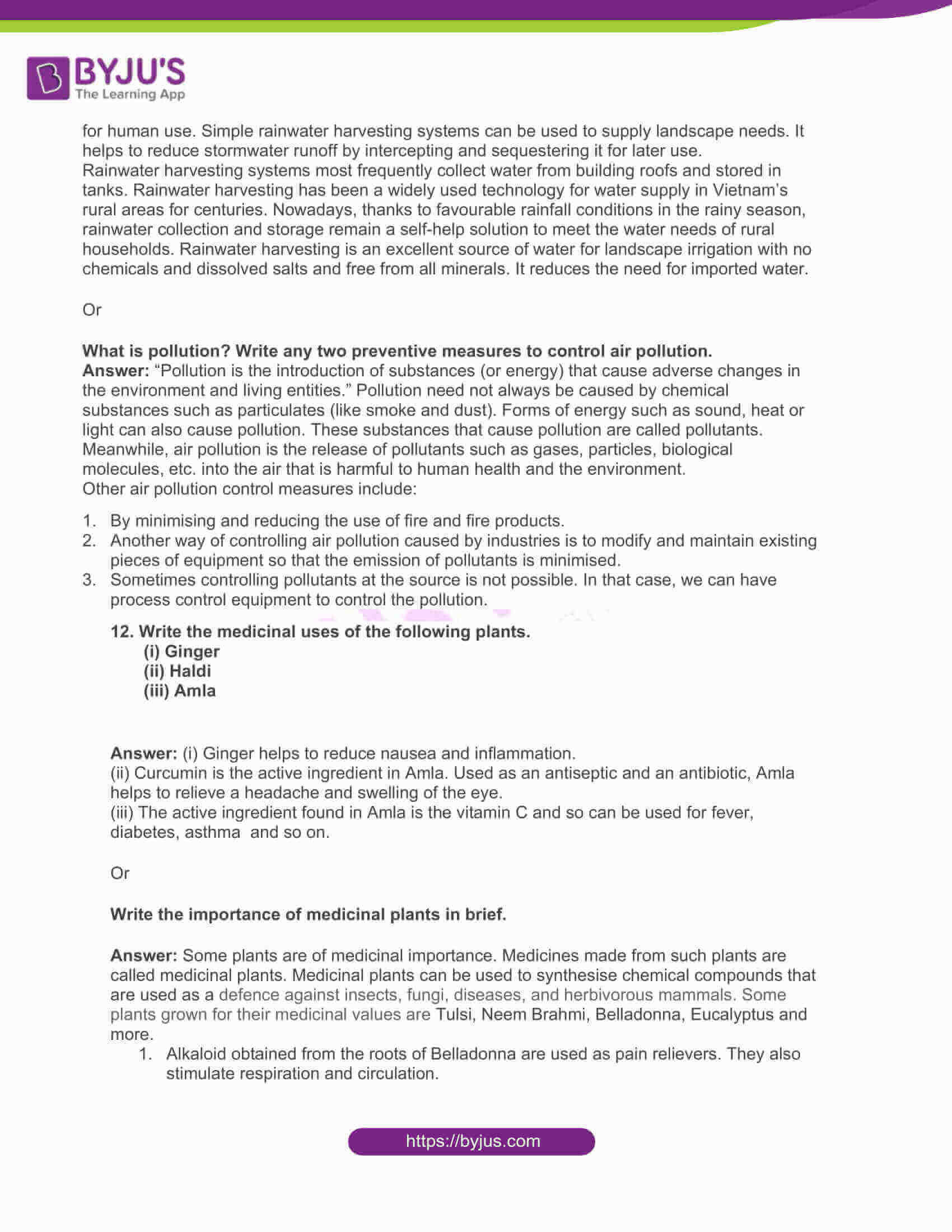

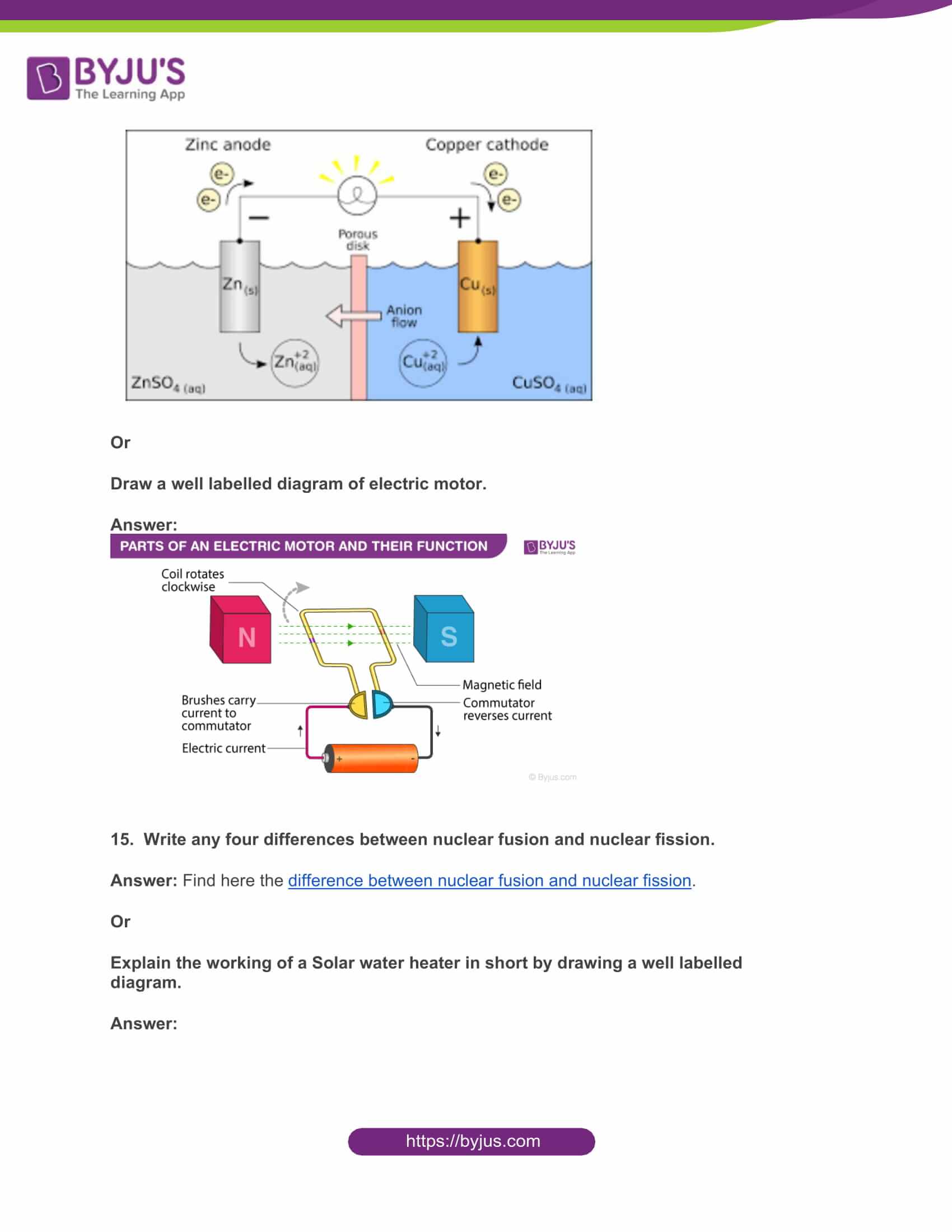
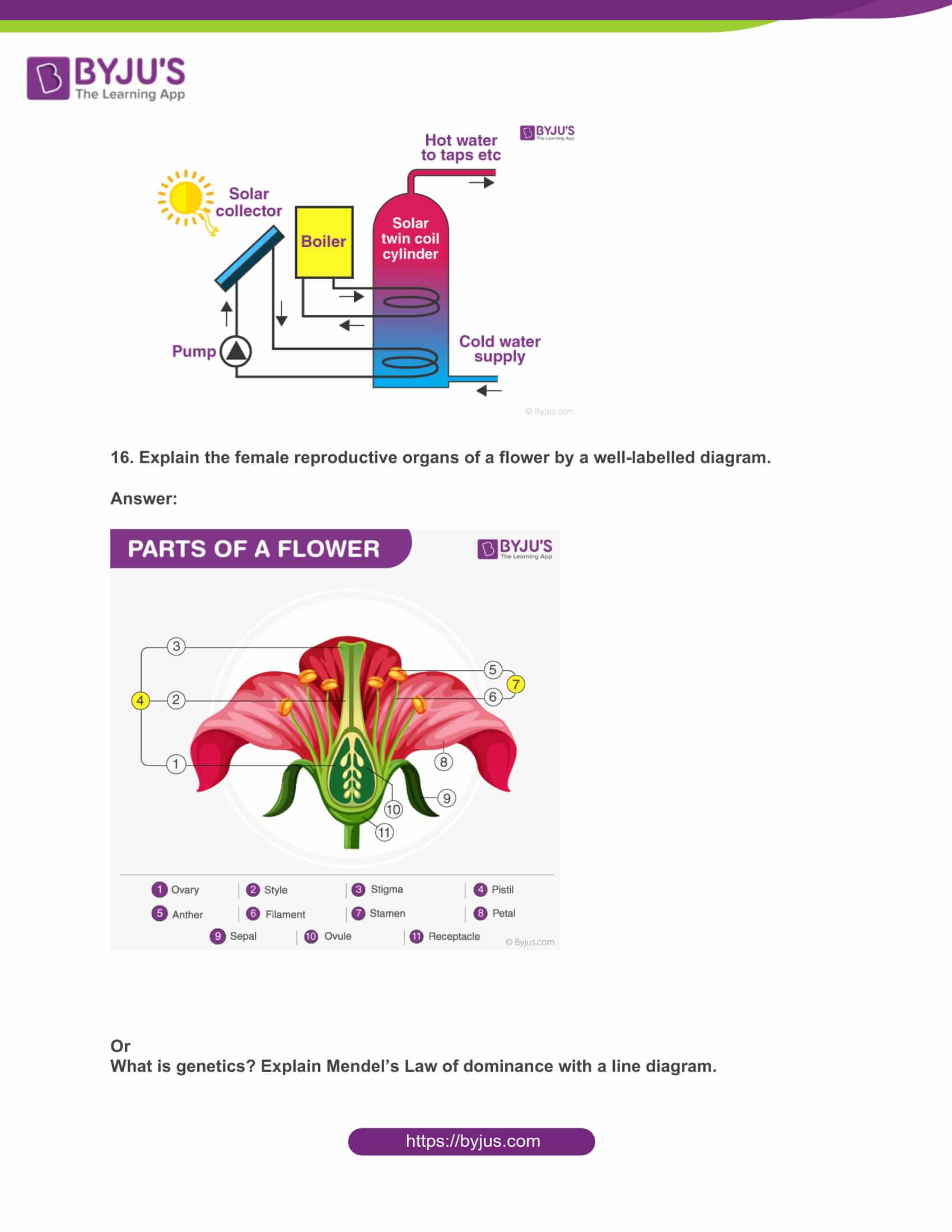


Comments